
Protesters fill the streets in cities across the US to denounce Trump agenda
Organizers call for 11 million people to march and rally in this weekend’s effort to ‘protect democracy’
Protesters poured into the streets of cities and towns across the United States again on Saturday, in the second wave of protests this month, as organizers seek to turn discontent with Donald Trump’s presidency into a mass movement that will eventually translate into action at the ballot box.
By early afternoon, large protests were under way in Washington, New York and Chicago, with images of crowds cascading across social networks showing additional demonstrations in Rhode Island, Maryland, Wisconsin, Tennessee, South Carolina, Ohio, Kentucky, California and Pennsylvania, among others. Americans abroad also signaled their opposition to the Trump agenda in Dublin, Ireland, and other cities.

More than 400 rallies were planned, most loosely organized by the group 50501, which stands for 50 protests in 50 states, one movement.
Opponents of Donald Trump’s administration mobilized from the east coast to the west, including at rallies in Portland, Maine, and Portland, Oregon, decrying what they see as threats to the nation’s democratic ideals.
The demonstrations included a massive march through midtown Manhattan, a rally in front of the White House, and protesters holding up placards reading “It’s Our Turn to Fight Tyranny” and “The Fascists Are Coming, The Fascists Are Coming” at a Concord, Massachusetts, commemoration of the start of the American revolutionary war 250 years ago.
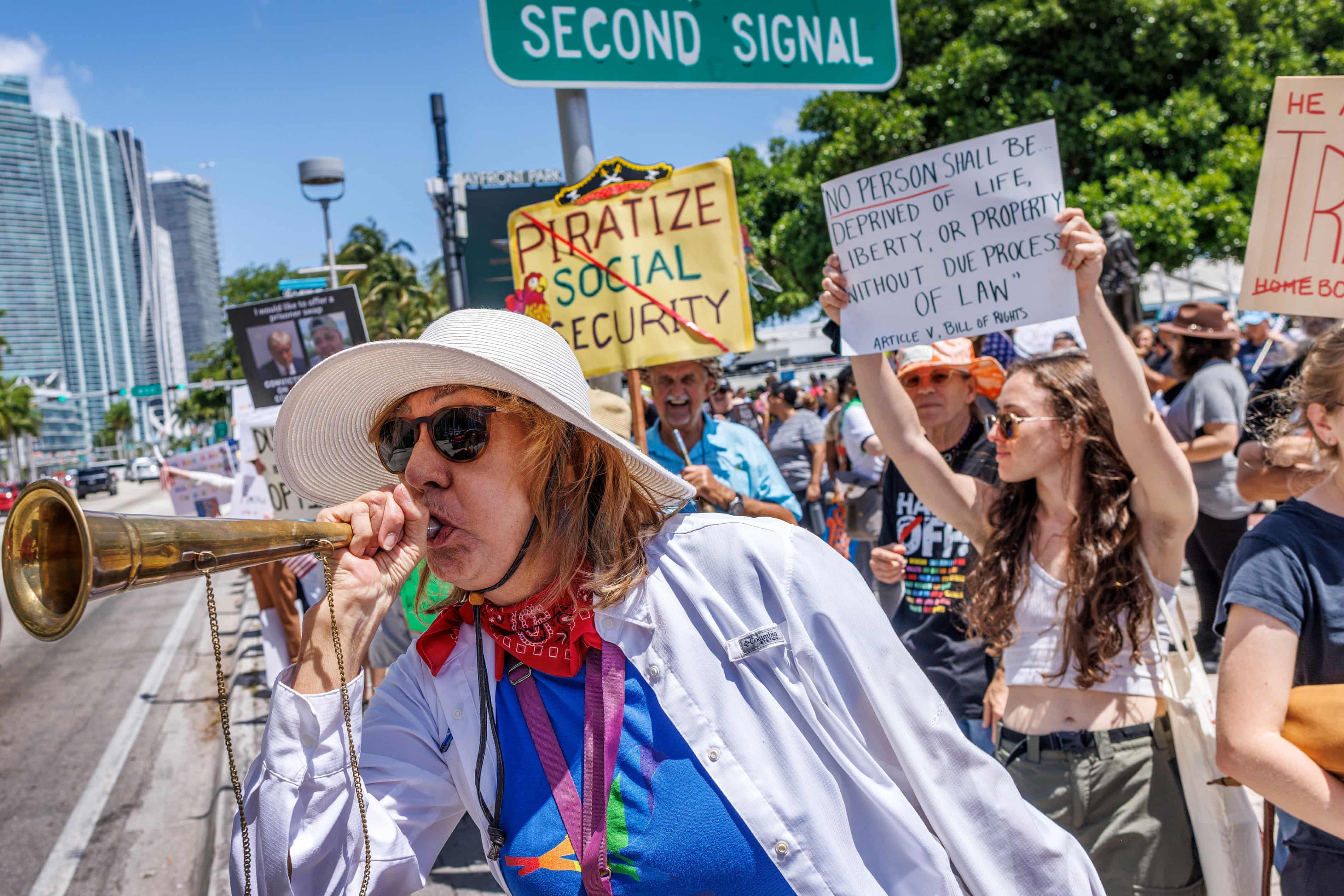

In Massachusetts, 80-year-old retired mason Thomas Bassford told CBS News that he believed US citizens were under attack from their own government, saying: “This is a very perilous time in America for liberty. Sometimes we have to fight for freedom.”
Protesters identified a variety of concerns, each unified under a common theme: opposition to the second Trump presidency.
“We are losing our country,” demonstrator Sara Harvey told the New York Times in Jacksonville, Florida. “I’m worried for my grandchildren,” she said. “I do it for them.”
It is the fourth protest event to be staged by the group since Trump was inaugurated on 20 January. Previous events included a “No Kings Day” on President’s Day, 17 February, a theme adopted before Trump referred to himself as a king in a social media post days later.
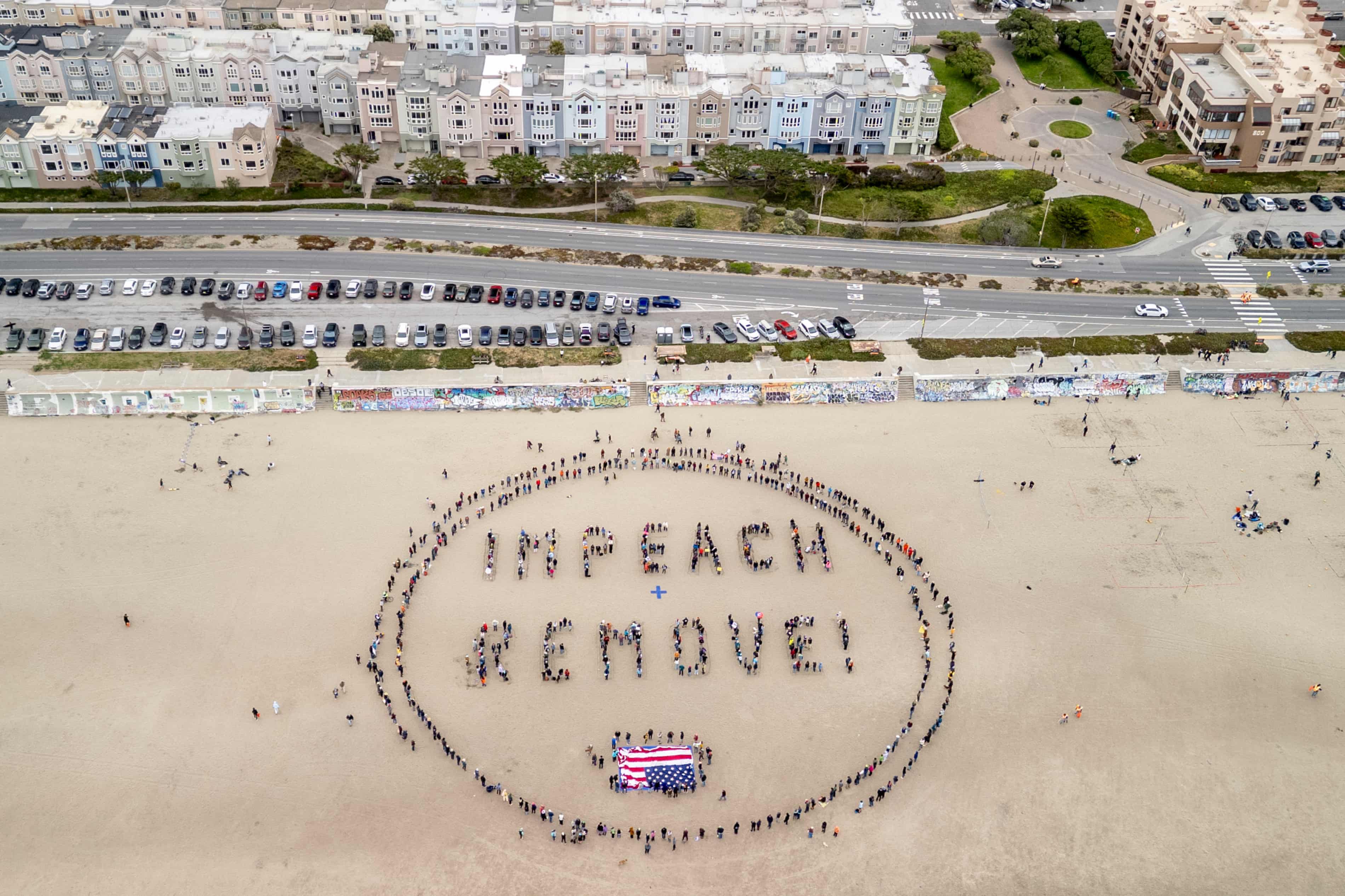
Organizers have called for 11 million people to participate in the latest rallies, representing 3.5% of the US population.
Such a figure would likely surpass the numbers who took part in the “Hands Off” rallies staged on 5 April, when 1,200 demonstrations were staged across the US to register opposition to Trump’s assault on government agencies and institutions, spearheaded by the president’s chief lieutenant, the tech billionaire Elon Musk, and his unofficial “department of government efficiency” (Doge) unit.
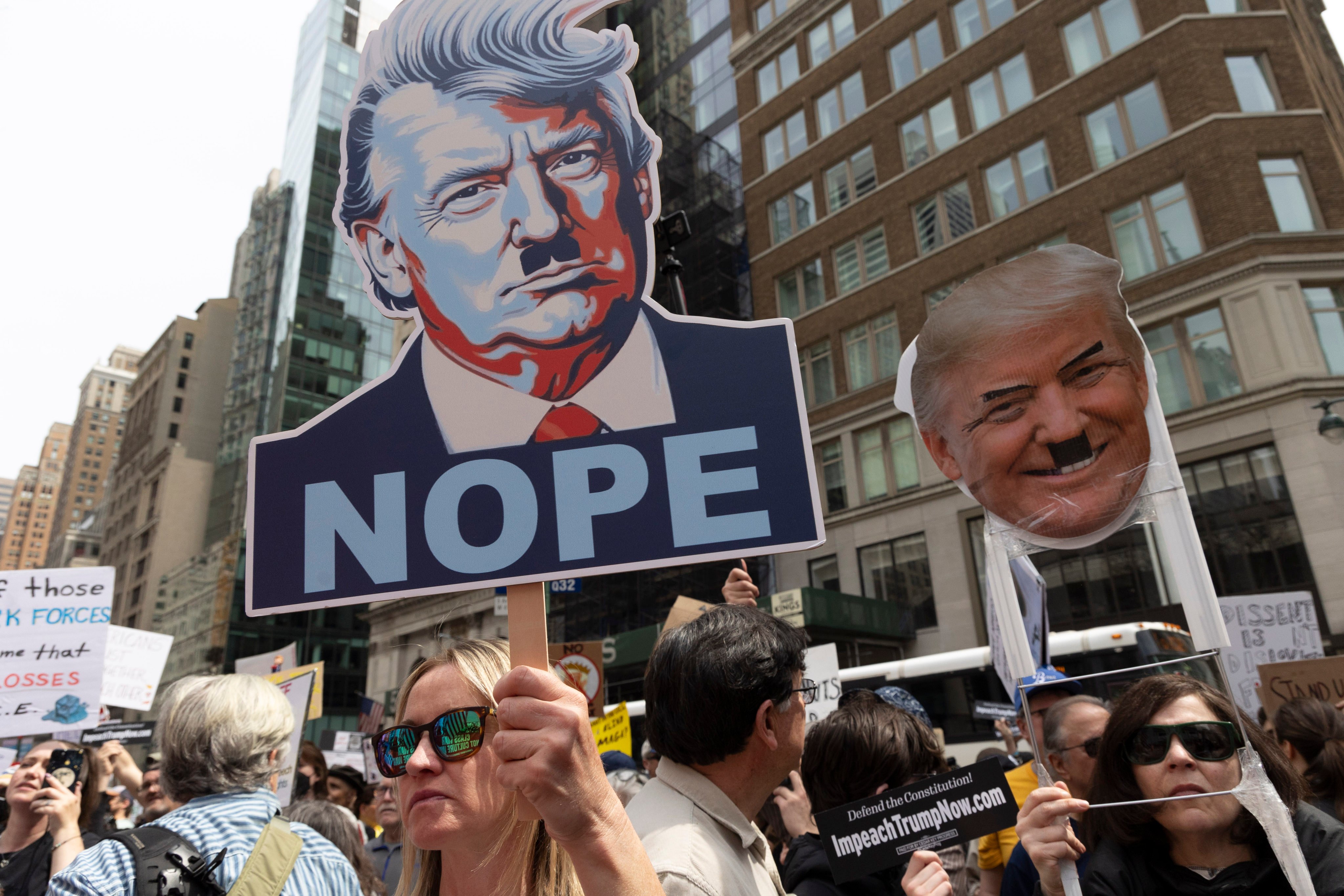
Indivisible, the progressive movement behind the “Hands Off” events, said it was seeking to send a message to opposition politicians and ordinary voters that vocal resistance to Trump’s policies was essential. It also said it was seeking to build momentum that would lead to further and larger protests.
Heather Dunn, a spokesperson for 50501, said the goal of Saturday’s protests was “to protect our democracy against the rise of authoritarianism under the Trump administration”.
She called the group a “pro-democracy, pro-constitution, anti-executive overreach, nonviolent grassroots movement” that was nonpartisan.

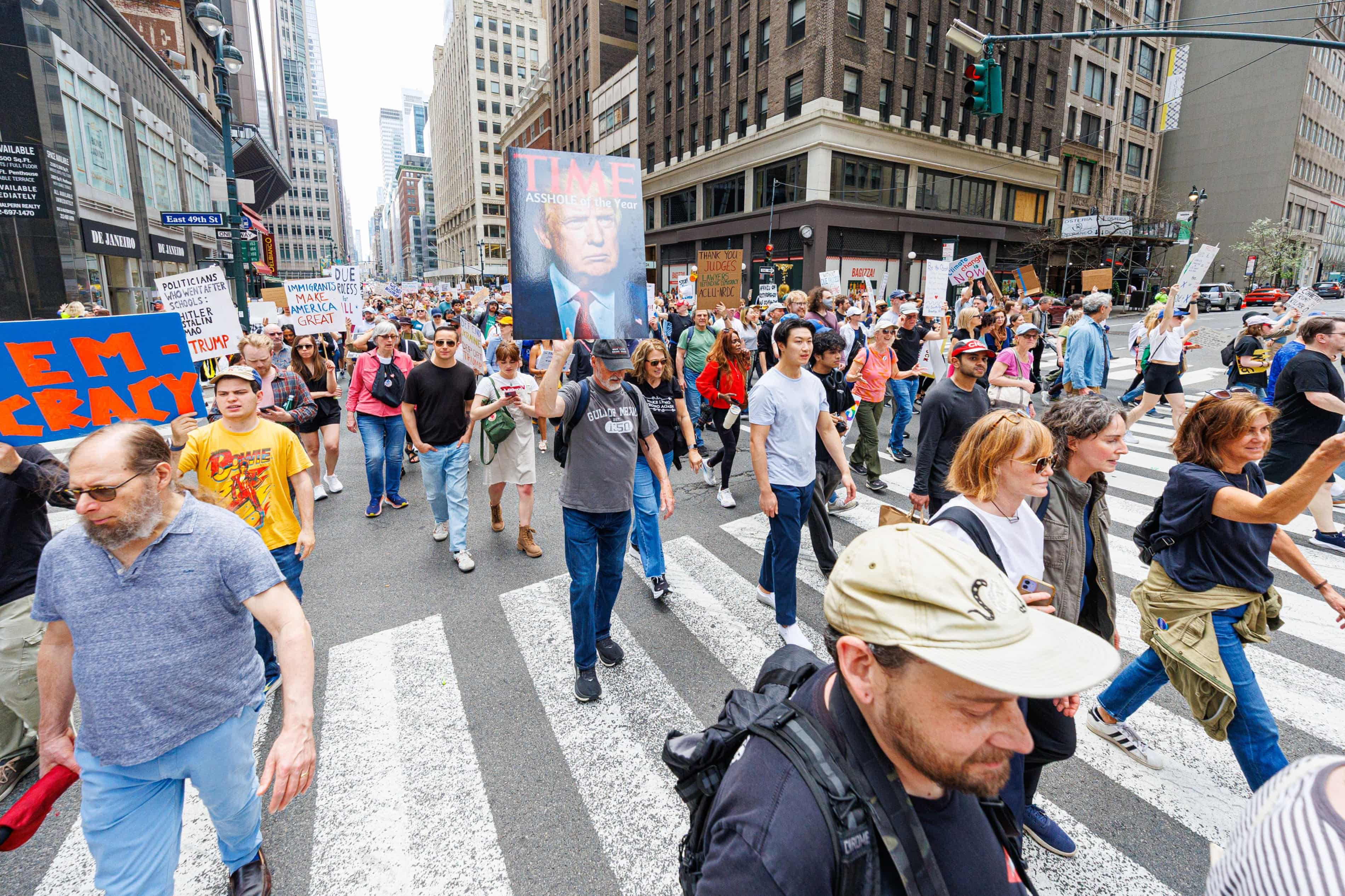
“We have registered Democrats, registered independents and registered Republicans all marching because they all believe in America, because they all believe in a fair government that puts people before profits,” she told the Washington Post.
Academics who have tracked the slide of democracy into authoritarianism say protests can be part of a wider of strategy to reverse the trend.
“Oppositions to authoritarian governments have to use multiple channels always,” said Steven Levitsky, a political scientist at Harvard University and co-author, with Daniel Ziblatt, of How Democracies Die. “They have to use the courts where those are available. They have to use the ballot box when that’s available, and they have to use the streets when necessary – that can shape media framing and media discourse, which is very, very important.”
In Washington DC on Saturday, a protest planned by the 50501 movement was scheduled to take place in Franklin Park, while other protesters, including a local chapter of Indivisible, rallied outside JD Vance’s home, on the grounds of the Washington Naval Observatory. Protesters also gathered near the Washington monument for a march in support of Kilmar Ábrego García, a Salvadoran man wrongly deported to El Salvador from Maryland.

Anti-Trump rallies held across the U.S. to protest administration’s policies
Opponents of President Trump’s administration took to the streets of communities large and small across the U.S. on Saturday, decrying what they see as threats to the nation’s democratic ideals.
The events ranged from rallies in midtown Manhattan and in front of the White House to a demonstration at a Massachusetts commemoration marking the start of the American Revolutionary War 250 years ago.
Thomas Bassford drove from his home, some three hours away in Maine, to witness the reenactment of the Battles of Lexington and Concord and “the shot heard ’round the world” on April 19, 1775, that heralded the start of the nation’s war for independence from Britain.
The 80-year-old retired mason said he believed Americans today are under attack from their own government and need to stand up against it.
“This is a very perilous time in America for liberty,” he said, as he first battles of the war for Independence with his partner, daughter and two grandsons. “I wanted the boys to learn about the origins of this country and that sometimes we have to fight for freedom.”
Elsewhere, protests were planned outside Tesla car dealerships against billionaire Trump adviser Elon Musk and his role in downsizing the federal government, while still others organized more community-service events, such as food drives, teach-ins and volunteering at local shelters.
Protests have been occurring recently across the U.S. In early April, opponents of Mr. Trump and billionaire Musk rallied across the U.S. to protest the administration’s actions on government downsizing, the economy, human rights and other issues.
More than 1,200 “Hands Off!” demonstrations were planned by more than 150 groups, including civil rights organizations, labor unions, LGBTQ advocates, veterans and election activists.
Organizers say they’re protesting against what they view as Trump’s civil rights and constitutional violations, including efforts to deport scores of immigrants and scale back the federal government by firing thousands of government workers and effectively shuttering entire agencies.
Some of the events drew on the spirit of the American Revolutionary War, calling for “no kings” and resistance to tyranny.
Boston resident George Bryant was among those who turned out in Concord. He said he was concerned Trump was creating a “police state” in America as he held up a sign saying, “Trump fascist regime must go now!”
“He’s defying the courts. He’s kidnapping students. He’s eviscerating the checks and balances,” Bryant said. “This is fascism.”
In Washington, Bob Fasick said he came out to the rally by the White House out of concern about threats to constitutionally protected due process rights, as well as Social Security and other federal safety-net programs.
The Trump administration, among other things, has moved to shutter Social Security Administration field offices, cut funding for government health programs and scale back protections for transgender people.
“I cannot sit still knowing that if I don’t do anything and everybody doesn’t do something to change this, that the world that we collectively are leaving for the little children, for our neighbors is simply not one that I would want to live,” said the 76-year-old retired federal employee from Springfield, Virginia.
For the second time this month, Chicago’s Daley Plaza filled up and city streets shut down for anti-Trump protesters on Saturday, in a demonstration that coincided with protests all over the country. The gathering, called the People’s Protest, was organized by the 50501 movement — short for “50 states, 50 protests, 1 movement.”
“The more people come out, the quicker the government will change,” protester Jim Coleman said. “There’s a lot of energy. People are very upset right now.”
The 50501 Movement began as an idea on Reddit, CBS Colorado reported. Since then, the movement has grown thanks to grassroots organizers, sparking multiple days of protests across the country, including at least 400 events in Colorado.
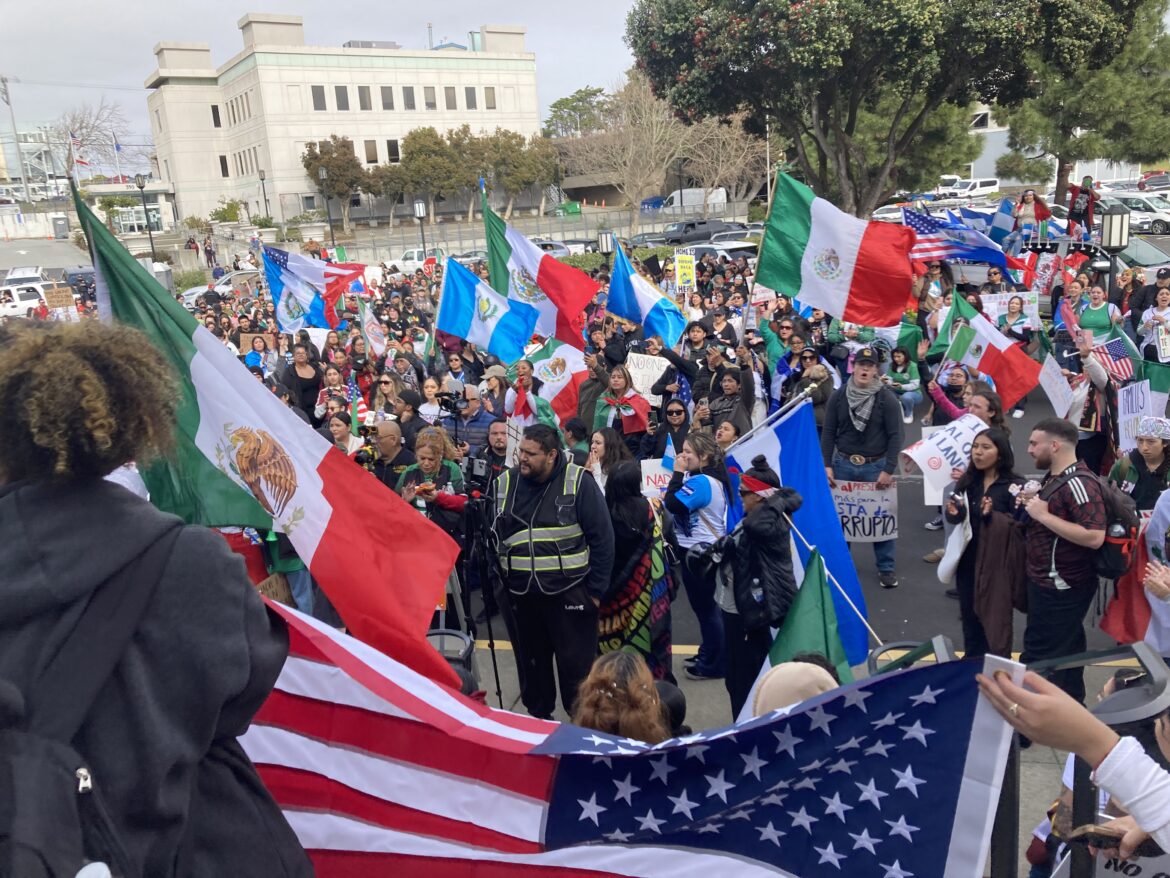
In Philadelphia, over a thousand people gathered in to join what’s called the “No Kings” protest, denouncing the policies and actions of the White House that they say are anti-democratic.
“Right now, our people are facing federally-funded programs that are being disappeared by the government; they’re being cut, people are losing their jobs right now, people are concerned about their immigrant family members. People are concerned about the state of this nation,” Talia Giles told CBS Philadelphia.
And in Manhattan, protesters rallied against continued deportations of immigrants from the steps of the New York Public Library.
“No fear, no hate, no ICE in our state,” they chanted to the steady beat of drums, referring to the U.S. Immigration and Customs Enforcement.
Marshall Green, who was among the protesters, said he was most concerned that Trump has invoked the wartime Alien Enemies Act of 1798 by claiming the country is at war with Venezuelan gangs linked to the South American nation’s government.
“Congress should be stepping up and saying no, we are not at war. You cannot use that,” said the 61-year-old from Morristown, New Jersey. “You cannot deport people without due process, and everyone in this country has the right to due process no matter what.”
Melinda Charles, of Connecticut, said she was most worried about what she viewed as Trump’s “executive overreach,” citing his clashes with the federal courts to Harvard University and other elite colleges that he views as too liberal.
“We’re supposed to have three equal branches of government and to have the executive branch become so strong, I mean, it’s just unbelievable,” she said.
China’s US envoy urges end to trade war, but warns Beijing ready to fight
Speaking at a public event in Washington on Saturday, details of which were posted on the Chinese embassy’s web site, Xie said tariffs would devastate the global economy and drew a parallel between the Great Depression and tariffs imposed by the U.S. in 1930.

Reporting by Lewis Jackson in Beijing; Editing by Raju Gopalakrishnan
The Supreme Court signals it might be losing patience with Trump
In an unusual overnight order, most of the justices voted to halt several illegal deportations.

Shortly after midnight early Saturday morning, the Supreme Court handed down a brief order forbidding the Trump administration from removing a group of Venezuelan immigrants from the United States without due process.
The facts of this case, known as A.A.R.P. v. Trump, are uncertain and rapidly developing. Much of what we do know about the A.A.R.P. case comes from an emergency application filed by immigration lawyers at the ACLU late Friday night. According to that application, the government started moving Venezuelan immigrants around the United States to a detention facility in Texas, without offering much of an explanation about why it was doing so.

Sometime on Friday, an unknown number of these immigrants — the ACLU claims “dozens or hundreds” — were allegedly given an English-language document, despite the fact that many of them only speak Spanish, indicating that they’ve been designated for removal from the country under the Alien Enemies Act. That law only permits the government to deport people during a time of war or military invasion, but President Donald Trump has claimed that it gives him the power to remove Venezuelans who, he alleges, are members of a criminal gang.
Immigrants who were previously deported under this dubious legal justification were sent to a prison in El Salvador, which is known for widespread human rights abuses. Following those deportations, the Supreme Court ruled the government must give any immigrant whom Trump attempts to deport under this wartime statute “notice and an opportunity to challenge their removal.”
The ACLU lawyers argue the government is attempting to defy this order, claiming that the immigrants at the Texas facility were told that their “removals are imminent and will happen today” — a timeline that did not provide a real opportunity to challenge their removal. In a Friday hearing on the matter, the government did not give an exact timeline for deportations, but said it “reserve[d] the right” to deport the immigrants as soon as Saturday, and that the government was in compliance with the Supreme Court’s first order.
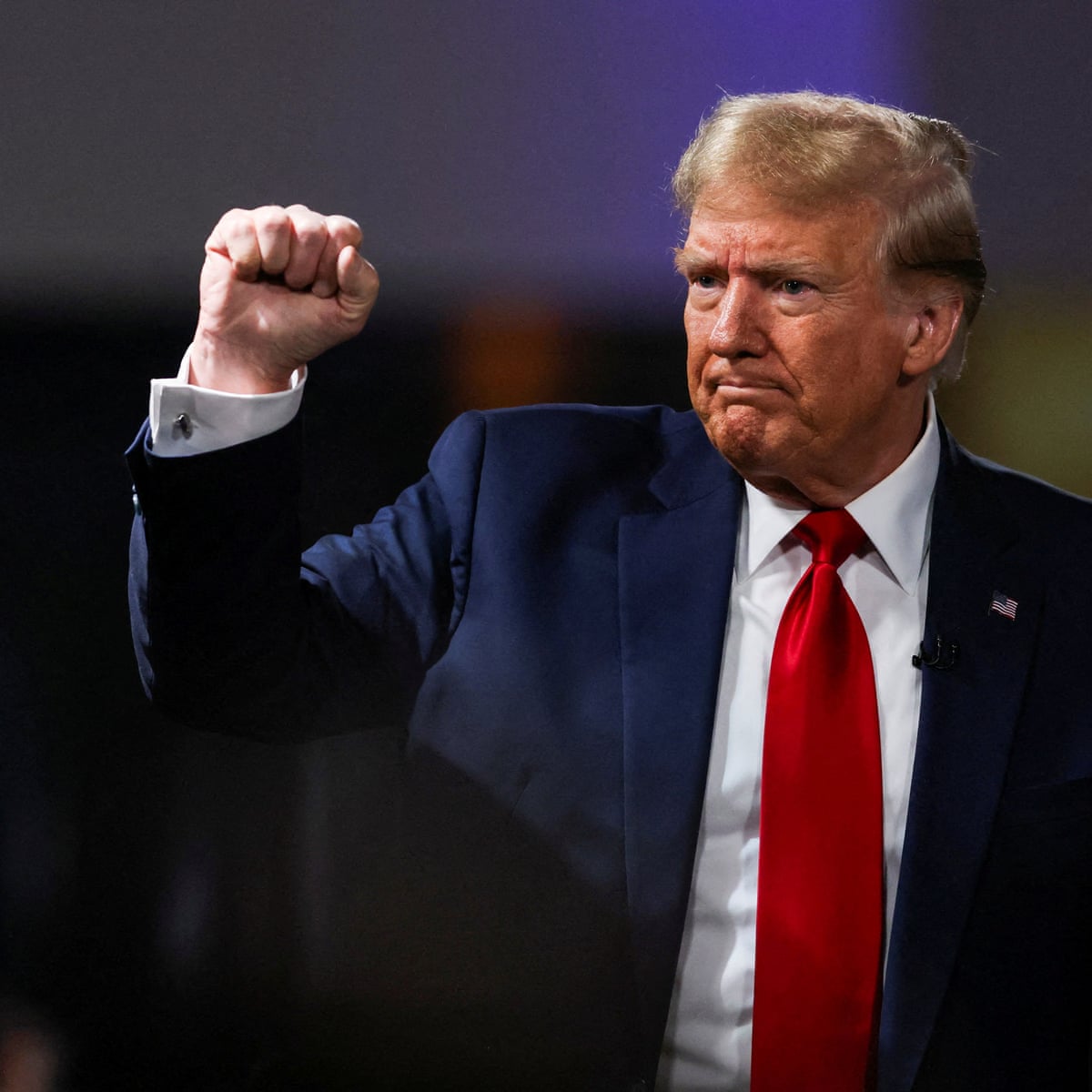
Assuming that the facts in the ACLU’s application are correct, this rushed process, where immigrants are moved to a facility without explanation, given a last-minute notice that many of them do not understand, and then potentially sent to El Salvador before they have a meaningful opportunity to challenge that removal, does seem to violate the Supreme Court’s April 7 decision in Trump v. J.G.G.
The Court’s late-night order in A.A.R.P. appears to be crafted to ensure that this notice and opportunity for a hearing mandated by J.G.G. actually takes place. It is just one paragraph and states that “the Government is directed not to remove any member of the putative class of detainees from the United States until further order of this Court.” It also invites the Justice Department to respond to the ACLU’s application “as soon as possible.”
Justices Clarence Thomas and Samuel Alito dissented from the A.A.R.P. order. Though neither has explained why yet, the order says that a statement from Alito will come soon.

Thus far, the Supreme Court has been extraordinarily tolerant of Trump’s efforts to evade judicial review through hypertechnical procedural arguments. Though the J.G.G. decision required the Trump administration to give these Venezuelan immigrants a hearing, for example, it also guaranteed that many — likely most — of those hearings would take place in Texas, which has some of the most right-wing federal judges in the country.
Though it is just one order, Saturday’s post-midnight order suggests that the Court may no longer tolerate procedural shenanigans intended to evade meaningful judicial review. If the ACLU’s application is accurate, the Trump administration appears to have believed that it could comply with the Court’s decision in J.G.G. by giving men who are about to be deported a last-minute notice that many of them cannot even understand. Whether most of the justices choose to tolerate this kind of malicious half-compliance with their decisions will likely become clear in the coming days. The Court’s A.A.R.P. order suggests that they will not.
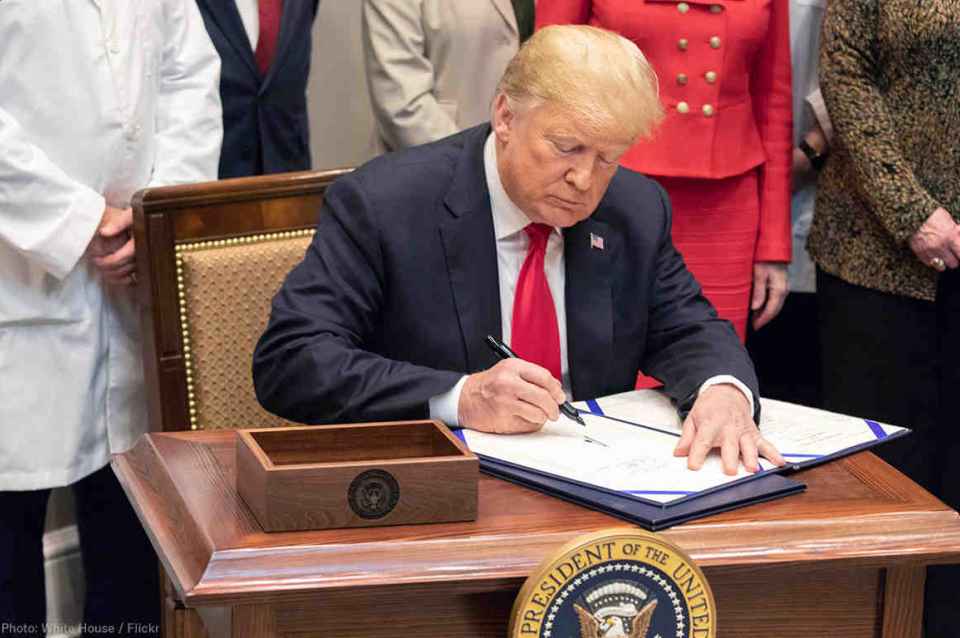
Still, it remains to be seen how this case will play out once it is fully litigated. The post-midnight order is only temporary. And it leaves open all of the most important issues in this case, including whether Trump can rely on a wartime statute to deport people during peacetime.
‘50501’ protesters denounce Trump administration in nationwide rallies while supporting impacted communities

A national day of action against President Donald Trump and his administration has united an outpouring of protesters across the country who are rallying in defiance of what they describe as a relentless assault on democratic institutions and civil liberties.
Over 80 protests were held at state capitols, courthouses and city halls in several states as part of the “50501” demonstrations – short for 50 protests, 50 states, one movement – condemning what they describe as Trump’s executive overreach, including deportations without due process, the dismantling of federal agencies and threats to higher education.
In addition to rallies, Saturday’s day of action saw communities coming together through food drives and donation campaigns, offering support to those most affected by the administration’s policies.
“We are sending a clear and urgent message to the country and to those in power: the people are paying attention, we are organizing, and we will not accept authoritarian overreach, fascist policy, or the dismantling of our rights under the Constitution,” Sarah Parker, one of the 50501’s national coordinators, told CNN.

“The administration’s continued targeting of marginalized communities, the criminalization of dissent, and the erosion of civil liberties demand a response — and this is ours.”
CNN has reached out to the White House for a comment.
In Washington, DC, protesters assembled outside the White House and the residence of Vice President JD Vance, who is currently in Rome, where he was meeting with a senior Vatican official on Saturday. Trump was at his golf club in Virginia.
Andy Zee, a spokesperson for Refuse Fascism, a group that organized a separate protest in DC on Saturday, told CNN a key concern is the failure to bring Kilmar Abrego Garcia, the Maryland man wrongfully deported to El Salvador, back to the US, after the Trump administration’s declaration that he is “never coming back.”
The Trump administration has taken extraordinary measures to crack down on immigration, aggressively pressuring Immigration and Customs Enforcement to pick up the pace of migrant arrests and touting mass deportation plans. The recent crackdown has included mistakenly deporting Abrego Garcia.
Public outrage is intensifying over Abrego Garcia’s deportation, with mounting criticism about the lack of due process afforded to him and the US government’s resistance to facilitate his court-mandated return to the country – which could risk a constitutional crisis.
“The Trump fascist regime must go and we’re here to demand that Kilmar Abrego Garcia be released,” Zee said, as protesters behind him waved signs reading, “Give me liberty or give me death,” while cheering and chanting.
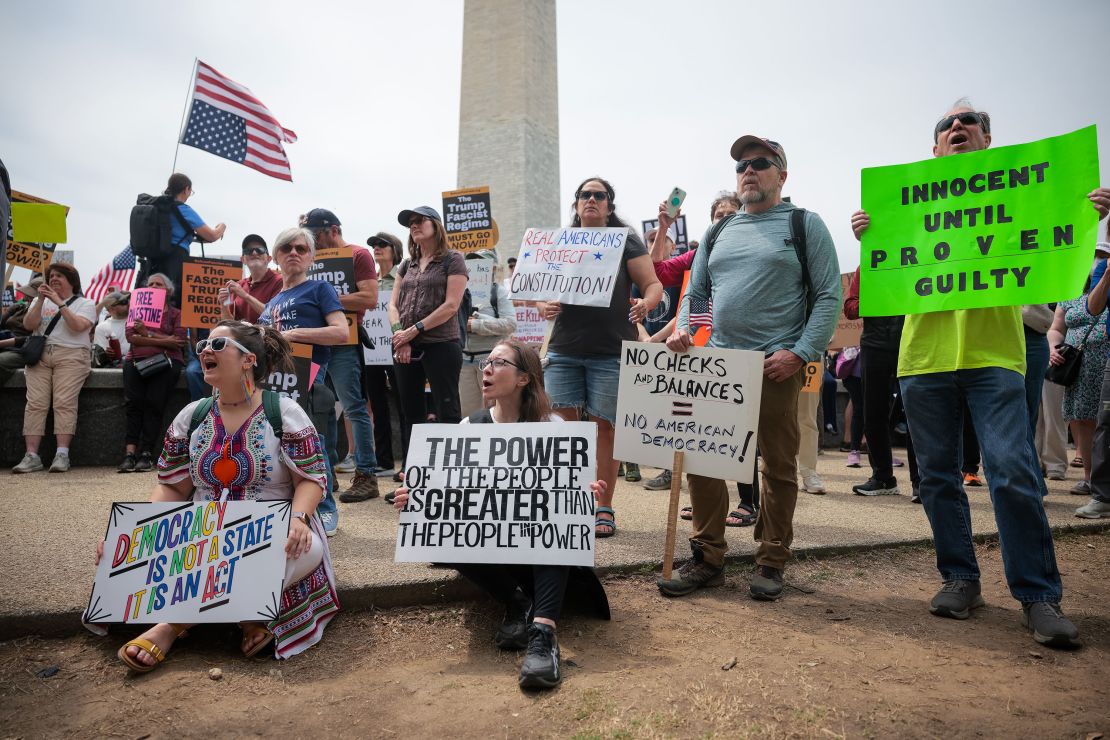
The 50501 Movement originated from a Reddit forum launched on January 25 that gave rise to a wave of nationwide protests led by grassroots organizations following Trump’s inauguration. What began as an online movement quickly spilled into the streets, with at least four major demonstrations in the past four months leading up to Saturday’s mass day of action.
On April 5, over 1,400 “Hands Off!” mass-action protests were held at federal buildings, congressional offices, Social Security’s headquarters, parks and city halls throughout the US. Demonstrators had three demands: “an end to the billionaire takeover and rampant corruption of the Trump administration; an end to slashing federal funds for Medicaid, Social Security, and other programs working people rely on; and an end to the attacks on immigrants, trans people, and other communities.”

Hundreds of “Tesla Takedown” demonstrations, also part of the wider movement against the Trump administration’s actions, have taken place in the US, Canada and Europe as activists ramp up their opposition to CEO Elon Musk’s efforts to slash federal government staffing and budgets.
“We are fighting back against a system that is failing the most vulnerable. We are fighting for democracy, for bodily autonomy, for freedom of expression, and for communities that have long been ignored and attacked by those in power,” Parker said. “This is not just a protest — this is a movement to reclaim our future.”
Protesters outraged by immigration policies and budget cuts

Outside the White House, a diverse group of protesters gathered Saturday to hear speeches and join together in chants such as “Money for jobs and education, not for war and deportation,” and “The people united will never be defeated.”
One of these demonstrators was Bob, a 64-year-old who requested that his last name not be printed out of fear of being fired from his role at the Department of Defense, where he has worked for the past 35 years.
While he is “fiscally conservative but socially liberal,” Bob said the Trump administration’s cuts to the Department of Veterans Affairs drove him to rally for a political cause for the first time in his life.
Since Trump took office, his administration has been vocal about its efforts to cut federal spending. Thousands of federal workers have been laid off or issued immediate termination notifications as part of Trump and Musk’s plan to downsize the government.
The Social Security Administration, responsible for monthly benefits to around 73 million Americans, is also now in turmoil after a massive reorganization, including the cutting of thousands of employees.
“I feel like people are veterans that come to serve our country earn benefits. They deserve to have those benefits provided for them, and the VA medical health service provides those benefits,” he said. “Ten years ago, we were complaining about how long the waits were in the VA and stuff, and how the VA wasn’t funded properly. Now, 10 years later, we’re cutting over to staff by 80,000 — that’s ridiculous.”
Veterans Affairs Secretary Doug Collins acknowledged in an interview last month that laying off 80,000 VA employees was “a goal, our target.”
Bob also described Trump’s evolving tariff policies as “pretty pathetic,” blaming them for the loss of “a lot” of money in his 401K and also part of the reason he plans to take on an additional job instead of retiring soon.

Another demonstrator, Gihad Elgendy, expressed outrage over the ongoing Israel-Hamas war and the deportations of “people for using their First Amendment rights, and other people being deported without due process.”
Elgendy is referring to the arrest of Mahmoud Khalil, a Palestinian refugee whose green card was revoked over his involvement in demonstrations at Columbia University, which has raised chilling questions about the exercise of the constitutionally protected right to free speech.
Elgendy also criticized the Trump administration for the wrongful deportation of Abrego Garcia to El Salvador, and said he believes Trump “could easily pressure El Salvador to bring him back” if he wanted to.

Emily Yanisko, a demonstrator and education professor for graduate students at American University, said she was inspired to protest by Harvard University’s refusal to comply with the Trump administration’s demands outlined in a letter sent to the university on April 11.
The demands included reforming programs having what the administration referred to in the letter to as “egregious records of antisemitism or other bias,” and halting DEI at the university.
“It was about time somebody stood up to (the Trump administration),” Yanisko said.
“The amount of weight that (Harvard has), they actually have the wherewithal to be able to stop them potentially,” she said. “Whereas the university I work at is much smaller and it doesn’t necessarily have the money or the resources to be able to stand up.”
Yanisko, who held a sign that said, “Hands off higher education, stay strong Harvard,” suggested universities “come together” to stand against the Trump administration’s threats to higher education because “education is so important for the development of a democratic society.”
“If we’re not allowed to teach the truth, and we’re not allowed to prepare our students to go into the world and do good works, then what are we doing?” she asked.

More than 1,000 ‘Hands Off’ anti-Trump protests hit cities across the US
People across the US took to the streets on Saturday to oppose what left-leaning organizations called Donald Trump’s “authoritarian overreach and billionaire-backed agenda”.
Organizers estimatedthat more than 500,000 people demonstrated in Washington DC, Florida and elsewhere.
At Washington’s national mall, demonstrators from as far afield as New Hampshire and Pennsylvania gathered in the shadow of the Washington monument before the anti-Trump rally there.
In overcast conditions, protesters displayed a vast array of placards and, in some cases, Ukrainian flags, expressing opposition to the policies of the administration, which has sought cordial relations with Russia amid its invasion of Ukraine.
Some protesters said they hoped the event – the first mass demonstration in Washington DC since Trump took office – would act as an example to inspire others to register opposition. “The aim is, get people to rise up,” said Diane Kolifrath, 63, who had travelled from New Hampshire with 100 fellow members of New Hampshire Forward, a civic society organisation.
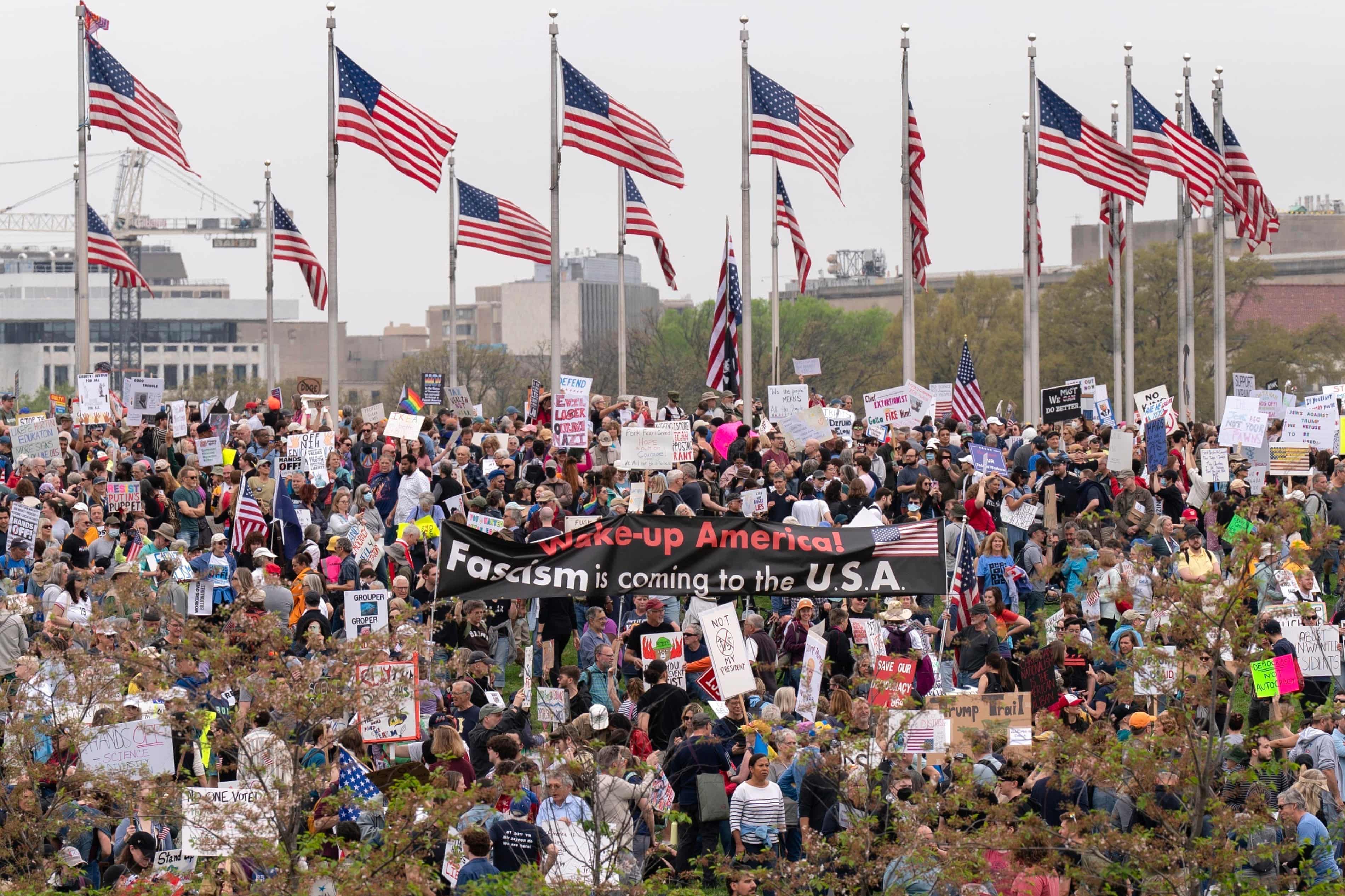
“Many people are scared to protest against Trump because he has reacted aggressively and violently to those who have stood up,” Kolifrath said. The goal of this protest is to let the rest of Americans who aren’t participating see that we are standing up and hopefully when they see our strength, that will give them the courage to also stand up.”
MoveOn, one of the organizations behind the day of protest dubbed “Hands Off” along with dozens of labor, environmental and other progressive groups, said that more than 1,000 protests took place across the US, including at state capitols.
“We want to send a signal to all people and institutions that have been showing anticipatory obedience to Trump and showing they are willing to bend the knee that there is, in fact, a mass public movement that’s willing to rise up and stop this,” said Leah Greenberg, Indivisible’s executive director.
“If our political leaders stand up, we will have their backs. We want them to stand up and protect the norms of democracy and want them to see that there are people out there who are willing to do that. The goal of this is building a message.”
The largest event was at the national mall in DC, where demonstrators numbered in the tens of thousands. Members of Congress, including the Democrats Jamie Raskin of Maryland, Maxwell Frost of Florida and Ilhan Omar of Minnesota, spoke to the crowd.
“They believe democracy is doomed and they believe regime change is upon us if only they can seize our payments system,” said Raskin, a Democratic representative from Maryland who is the party’s top figure on the House judiciary committee.
He added: “If they think they are going to overthrow the foundations of democracy, they don’t know who they are dealing with.”
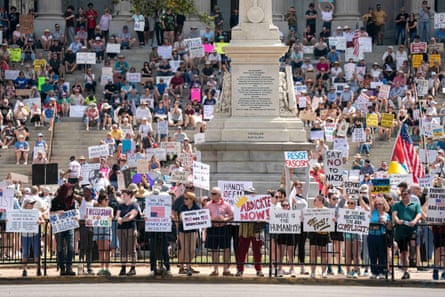
Kelley Robinson, the president of the Human Rights Campaign advocacy group, criticized the administration’s treatment of the LBGTQ+ community at the rally at the national mall.
“The attacks that we’re seeing, they’re not just political. They are personal, y’all,” Robinson said. “They’re trying to ban our books, they’re slashing HIV-prevention funding, they’re criminalizing our doctors, our teachers, our families and our lives.”
“We don’t want this America, y’all,” Robinson added. “We want the America we deserve, where dignity, safety and freedom belong not to some of us, but to all of us.”
The scene in Hollywood, Florida, about an hour south of Trump’s Mar-a-Lago resort, was lively as well. Referring to the White House’s billionaire business adviser Elon Musk and the government cuts he has overseen, predominantly white protesters chanted: “Hey, hey, ho, ho, Trump and Musk have got to go.”
They jeered motorists in Tesla Cybertrucks manufactured by Musk’s electric vehicle maker – and wielded colorful placards that left little doubt as to where they stood with the Trump administration.
“Prosecute and jail the Turd Reich,” read one. Some reserved special ire for the world’s richest person: “I did not elect Elon Musk.” Others emphasized the protesters’ anxieties about the future of democracy in the US. “Hands off democracy,” declared one placard. “Stop being [Vladimir] Putin’s puppet,” enjoined another, referring to Russia’s dictator.
.

Many motorists driving past the assembled demonstrators honked their horns and flashed thumb’s-up gestures in solidarity. Broward county was one of only six counties in Florida that voted for Kamala Harris in November – she defeated Trump there by 16 percentage points – and it is host to one of the US’s most vibrant LGBTQ+ communities.
“This is an assault on our democracy, on our economy, on our civil rights,” said Jennifer Heit, a 64-year-old editor and resident of Plantation who toted a poster that read: “USA: No to King or Oligarchy.” She added: “Everything is looking so bad that I feel we have to do all we can while we can, and just having all this noise is unsettling to everyone.”
Heit attended a protest outside a Tesla dealership in Fort Lauderdale recently, and she has been outraged by the Trump administration’s frontal assault on the rule of law and the judiciary – including with respect to people who have been deported without due process. “We’re supposed to be a nation of laws and due process,” she said.
Public health researcher Donna Greene, 62, came dressed as France’s beheaded queen Marie Antoinette and carried a placard that said: “Musk and Trump Say Let Them Eat Cake.”
She said she is proud of the 65 missions that her father Sam Ragland flew for the US military during the second world war. But, she said, the country her dad fought for is not the same one she sees emerging under Trump.

“Everything my father fought for and everything we hold dear as a country is being dismantled,” Greene said. “I am beyond incredulous at how quickly our country’s institutions have been dismantled with no pushback from the Republicans who are currently in charge.”
In Ventura, California, Sandy Friedman brought her eight-year-old graddaughter, Harlow Rose Rega, to demonstrate. Friedman said she was worried about her social security, remarking: “I worked my whole life and so did my husband. Now I’m afraid Trump will take it away.”
Harlow held up a sign reading: “Save my future.”
The protests come after the stock market plummeted this week following Trump’s 1 April announcement of tariffs. Despite the economic fallout, Trump said on Friday: “My policies will never change.”
Trump’s approval rating this week fell to 43%, his lowest since taking office, according to a Reuters poll.

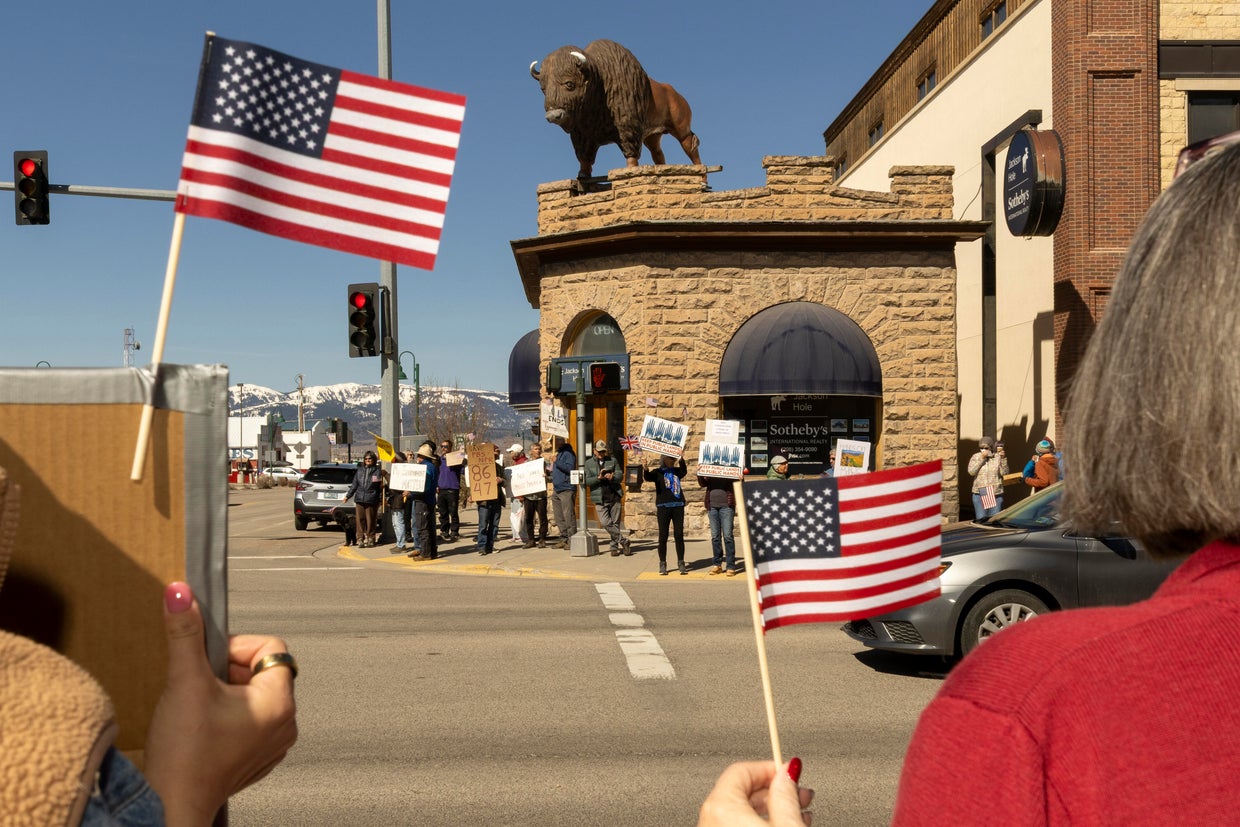
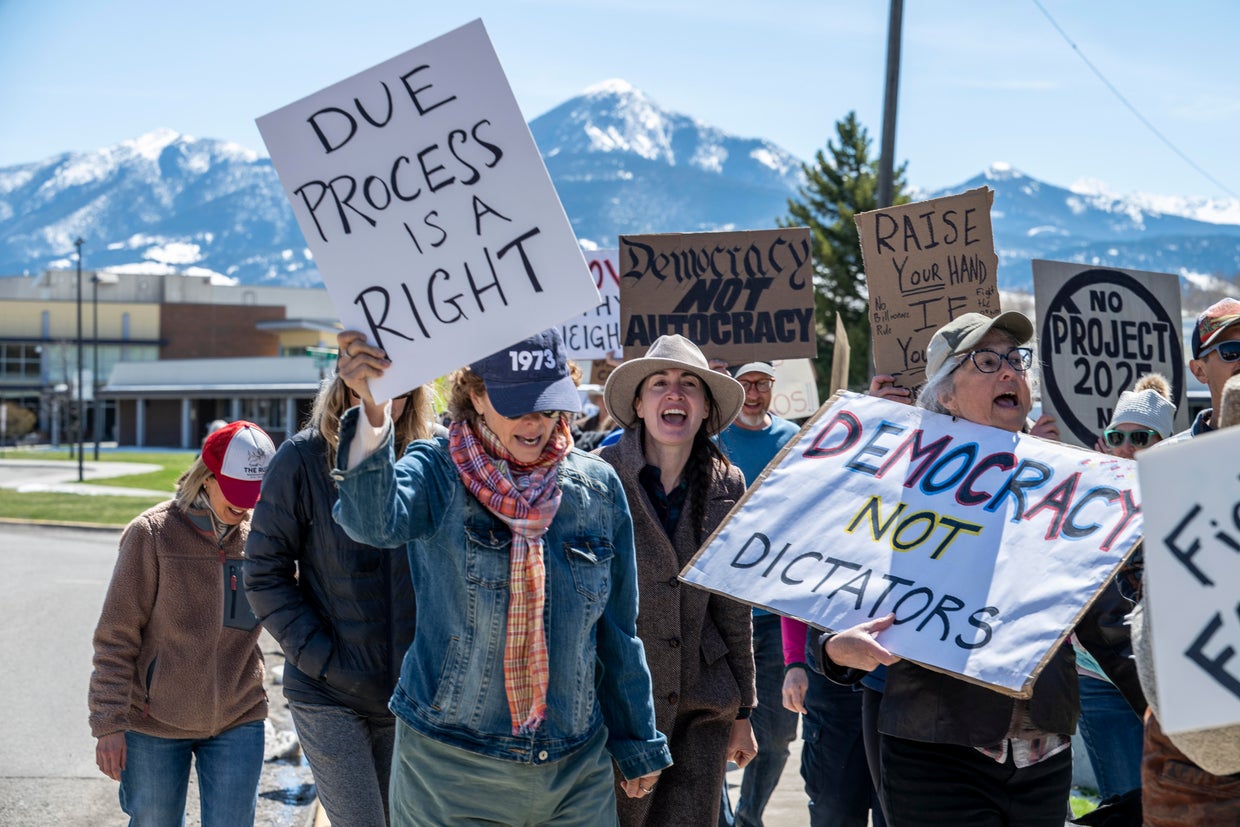
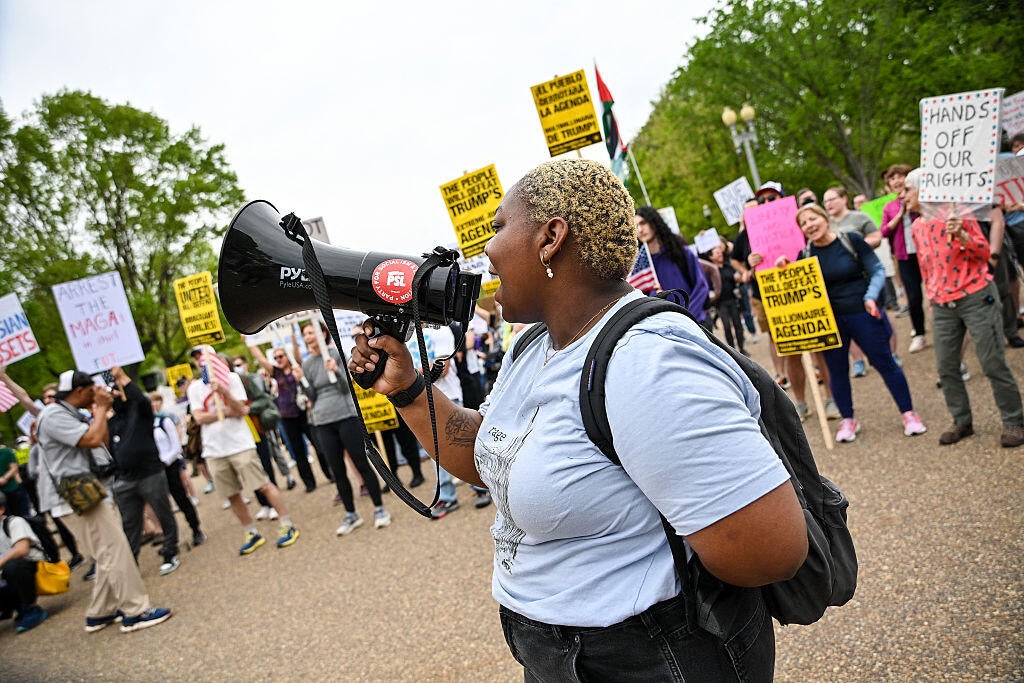
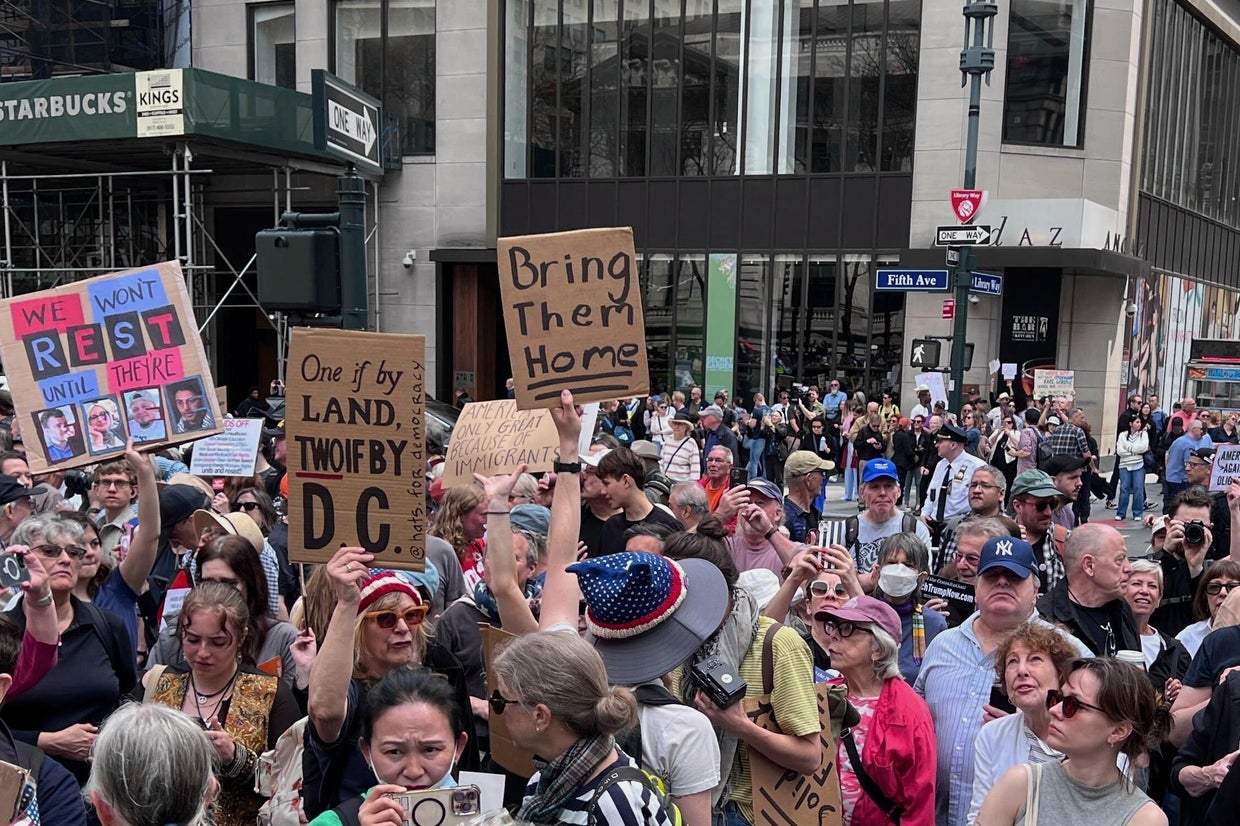




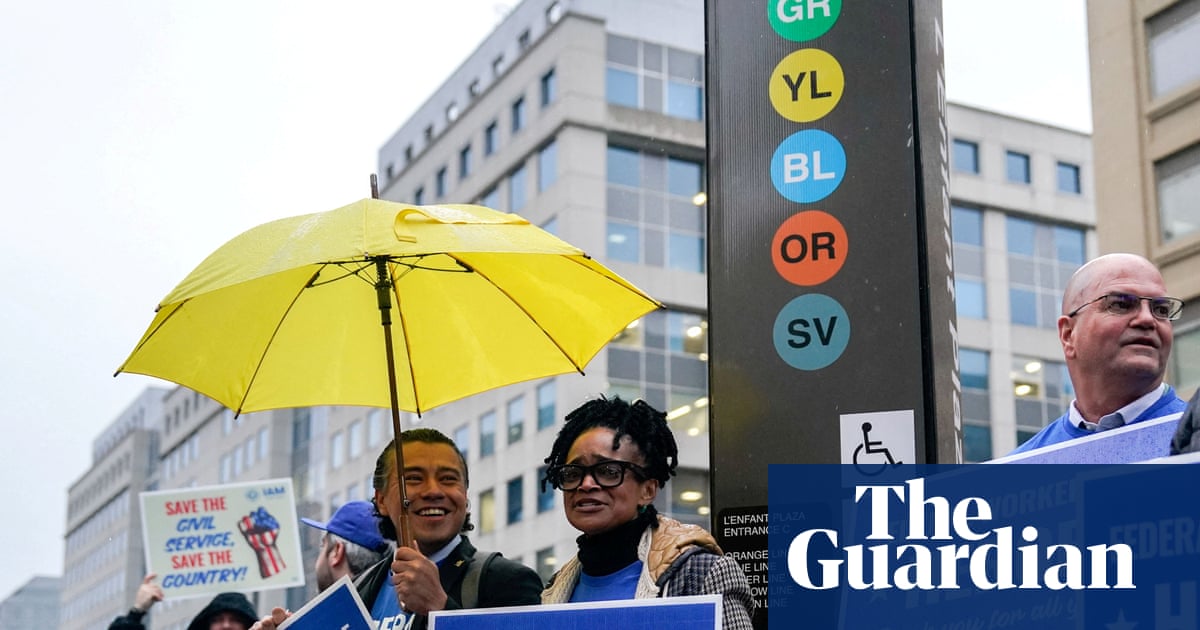


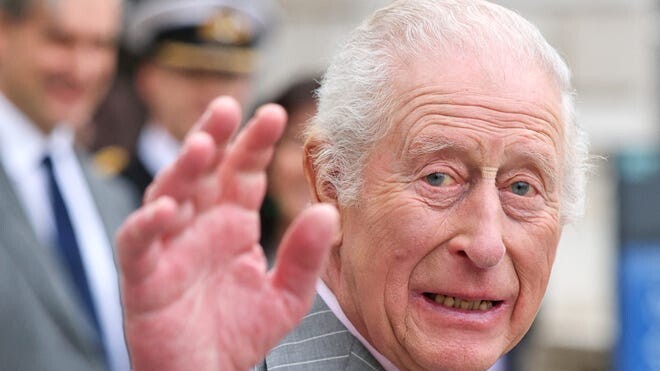




































:max_bytes(150000):strip_icc():focal(749x0:751x2):format(webp)/Christianna-Apps-5-121825-ae06cb988405460987109364d7c522c3.jpg?w=1200&resize=1200,0&ssl=1)